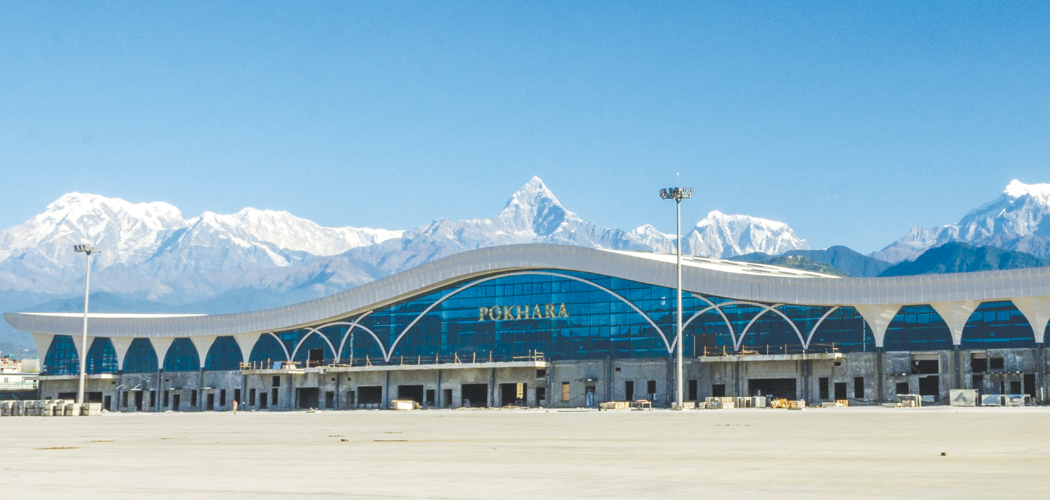- Thursday, 8 January 2026
Scant spending a bane for development
Kathmandu, May 29:The country is set to receive the budget for the next Fiscal Year 2022/23 on Sunday amidst a dismal performance of capital and recurrent allocations in the current FY 2021/22.
As the major ministries mobilising the capital allocations for the development and infrastructure projects across the country fared poorly, the federal government could spend only 33.12 per cent of the Rs. 378 billion capital budget by Friday. It means, only Rs. 125.2 billion is disbursed from the Financial Comptroller General Office till the other day.
The capital expenditure so far this year is less against the same period of the previous year with 37.6 per cent mobilisation of development allocation.
Although the size of the budget has been significantly increased for the current fiscal year – from Rs. 1474.6 billion of 2020/21 to Rs. 1632.8 billion in 2021/22 – and COVID-19 pandemic is largely under control with a brief rise in the cases in January, the government at all levels performed poorly in budget mobilisation.
However, the recurrent expenses are identical with 70.7 per cent this year and 69.08 per cent last year. As per the current expenditure indicators, there are less chances for optimum utilisation of the budget.
Sensing this scenario, Finance Minister Janardan Sharma ‘Prabhakar’ has adjusted the size of the budget to Rs. 1546.2 billion, 94.7 per cent of the total, in the mid-term review of the budget. Likewise, recurrent expenditure is reduced to Rs. 1035.4 billion, capital to Rs. 340.3 billion and financing to Rs. 170.5 billion.
Even according to the budget adjustment, the government is under the pressure of spending the remaining 215.1 billion in the remaining 48 days of the current fiscal year which means about Rs. 4.48 billion should be used up in a day.
Meanwhile, the growing prices of steel and other construction materials in the wake of the Russia-Ukraine war had resulted in the contractors’ demand to review the tender agreements to adjust the price. As per the rule, the government cannot spend more than 20 per cent of the total capital allocation in the final months of the fiscal year. It means the capital budget would still remain unused even after the adjustment.
This is not just a sporadic occurrence, it has become a trend in the country for the past many years. For example, former Finance Minister Bishnu Prasad Paudel had downscaled the budget by 14.1 per cent while capital expenditure was reduced by 14.8 per cent in the last FY 202021. That year size of original budget was Rs. 1474.6 billion and capital allocation was Rs. 3529.1 billion.
Likewise, citing the impact of the coronavirus on the economy and development activities, FM Dr. Yuba Raj Khatiwada in FY 2019/20 had reduced the size of budget in the mid-term review.
The revised government expenditure for that year was expected to be at Rs. 1073.3 billion, which was 70 per cent of the total allocation Rs. 1532.9 billion while capital expenditure stood at 58.6 per cent of about Rs. 408.6 billion.
Similarly, in the year before the COVID-19 hit the country, FY 2018/19, the Finance Ministry had reduced the size of the budget to Rs. 1208.3 billion, which was 91.8 per cent of the total allocation. The capital budget was also adjusted to 86.9 per cent.
Provinces fail to perform
Contrary to the earlier expectations that the creation of the subnational bodies would help in better execution of the budget and utilisation of resources, the provinces have failed to spend the budget allocated to them.
According to the Nepal Rastra Bank (NRB), in the nine months of this year, total resource mobilization of provincial governments remained at Rs. 125.53 billion. The federal government had transferred Rs. 90.04 billion as grants and revenue from federal divisible fund wto provincial governments and the provincial governments mobilized Rs. 35.48 billion in terms of revenue and other receipts in the review period.
However, the total expenditure of provincial governments by mid-April stood at Rs. 80.62 billion, said the NRB. But the federal government had earmarked Rs. 387.3 billion (23.72 per cent) for intergovernmental transfer to the provinces and local levels. Better utilisation of this budget could result in better project execution.
In the last fiscal year 2020/21, Bagmati and Sudurpaschim provinces expected to spend 74 per cent and 72.6 per cent of their budget. The expectations were announced on the basis of nine months’ statistics of budget utilistaion. However, Karnali and Province 1 said that they would utilise only 46.4 per cent and 60 per cent of their budget, respectively.
Former Finance Secretary, Remeshwore Khanal, said that the reasons behind the failure to implement development projects are poor human resource and project management, lack of project preparedness and budget allocation to the projects that can’t utilise it. For the past many years, the government allocated budget in billions for the international airport project in Nijgadh but most of the budget was surrendered by the end of the year.
“Until the trend to change project managers with the change in the ministerial leadership, and installation of henchmen at the projects, this trend of budget underutilisation will not be improved,” he said.
According to him, political ‘bhagbanda’ in the appointment of the project managers and budget allocation at the whim of leaders have been the major challenges to the development work. To improve the budget expenditure, the budget is announced about one-and-a-half months before the beginning of the fiscal year, and the provision to seek approval from the MoF is removed, and ministries and line agencies can start spending from the first day of the new fiscal year. But the situation has remained intact.
FM Sharma had announced to spend 10 per cent of the capital budget each month after October last year but it fell into the deaf ears. He had also initiated multiple discussions with the line ministries, provinces and other stakeholders to make improvements in the utilisation of the budget.
FM Sharma has pledged to enact new policies for better execution of the budget of the upcoming year 2022/23. In the Policy and Programmes of the government for the next fiscal year, he said to enhance allocation efficiency and institutional capacity, and maintain fiscal discipline. Likewise, he had said that budget wouldn’t be earmarked for the projects that are not technically and economically feasible.












-original-thumb.jpg)



